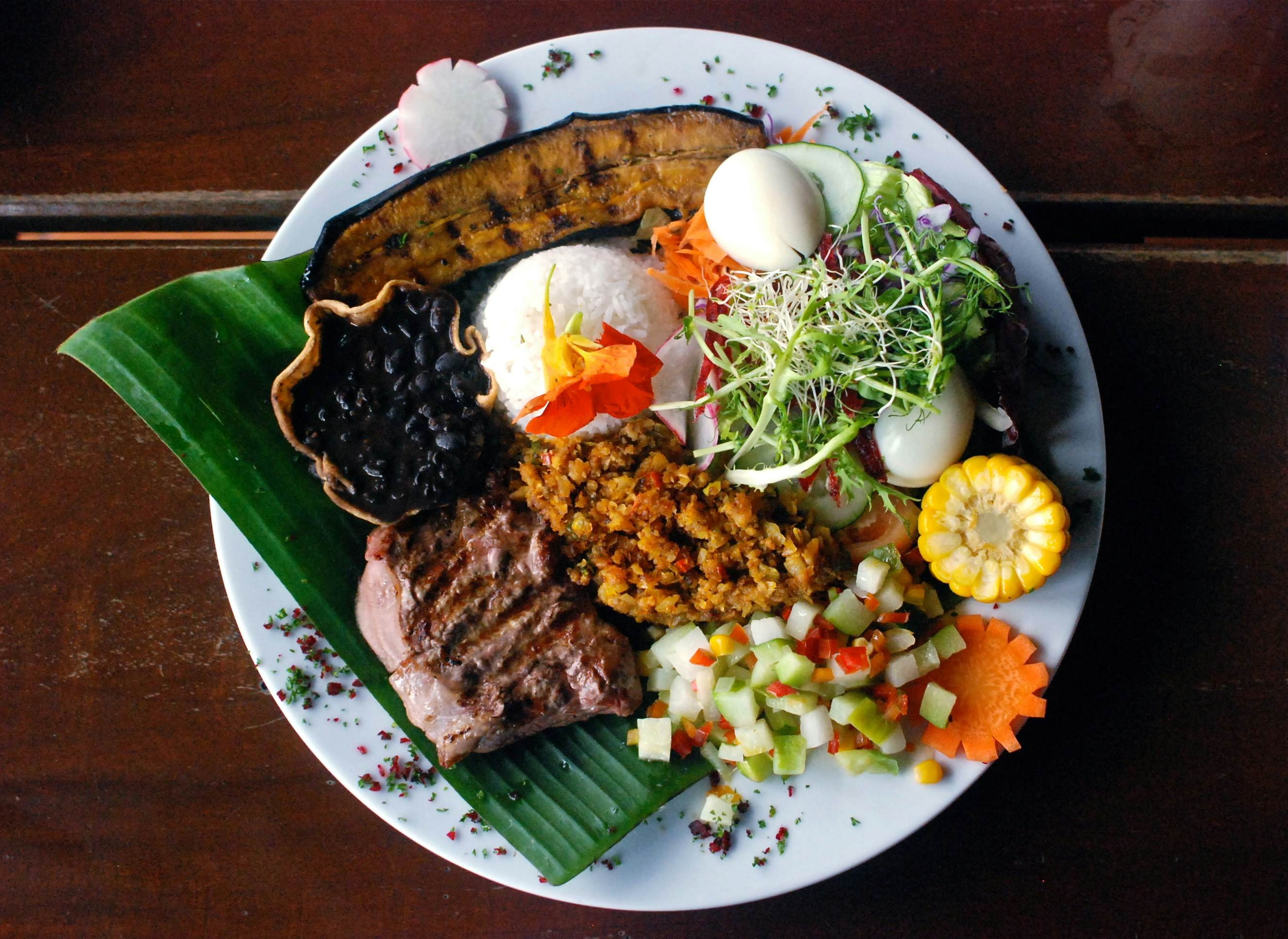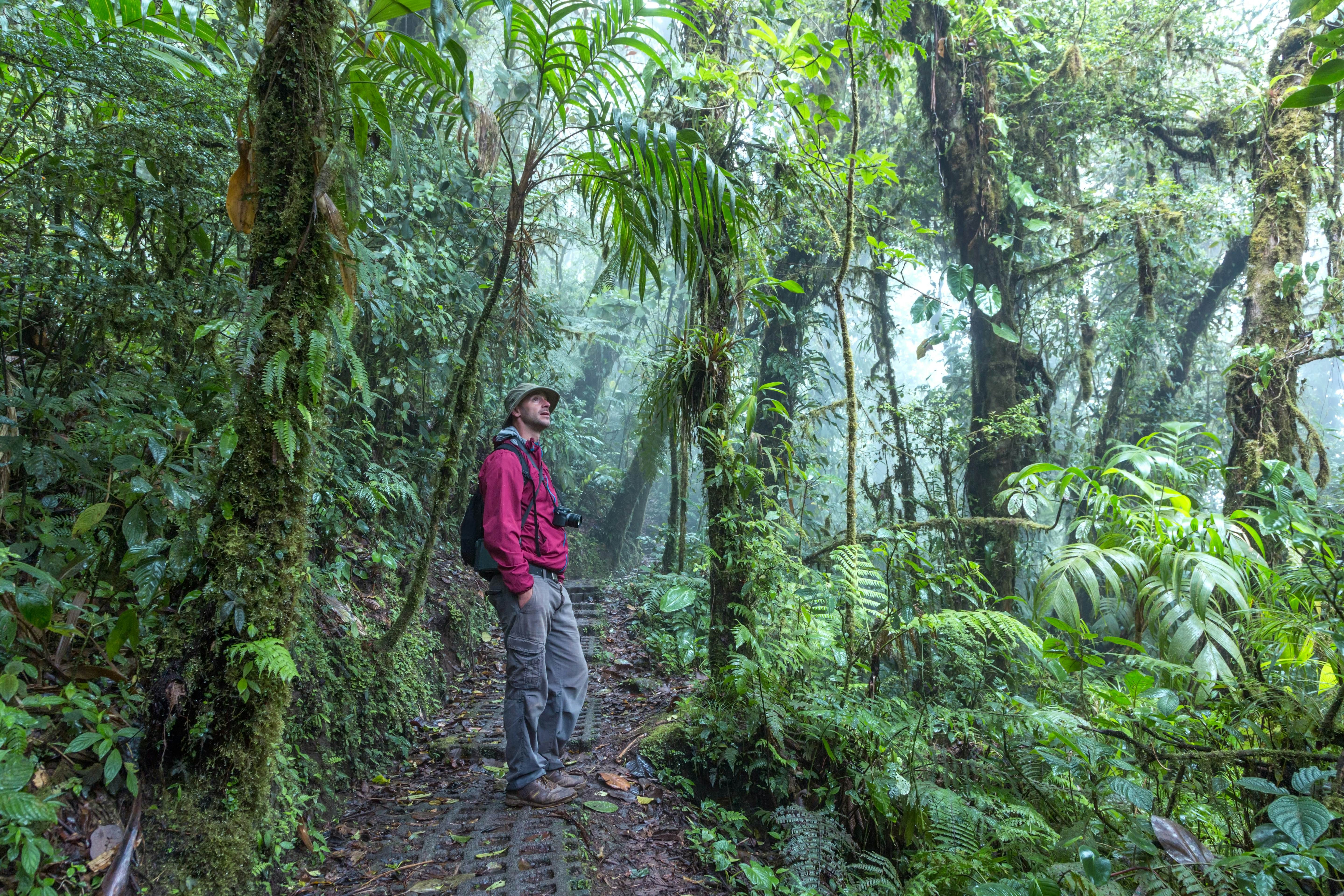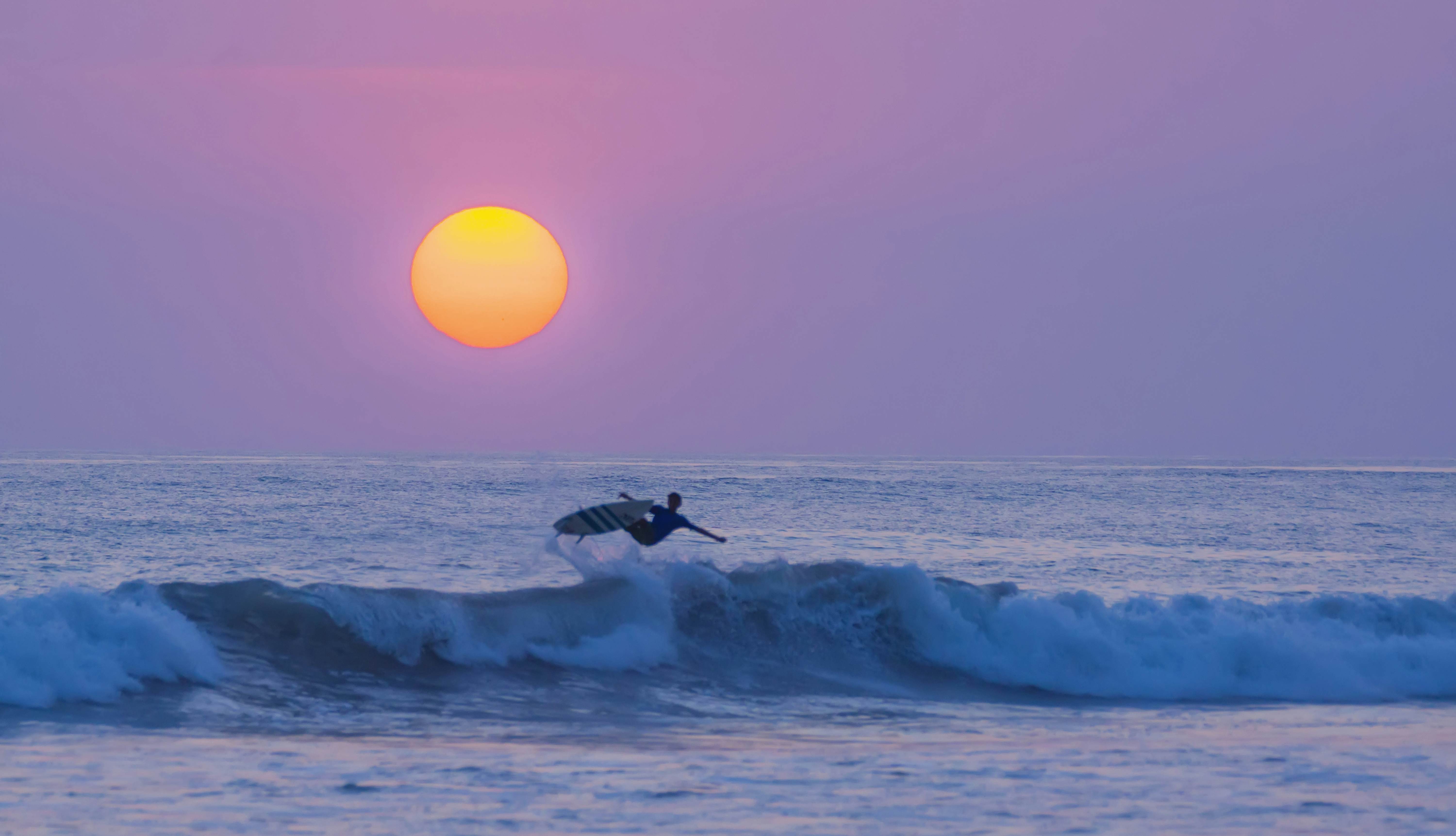Costa Rica travel offers an unforgettable experience, blending adventure, natural beauty, and a unique cultural philosophy. TRAVELS.EDU.VN helps you discover everything you need to know for a seamless and enriching journey to this captivating destination. Explore Costa Rica’s pura vida lifestyle. Plan your trip with confidence with this guide covering Costa Rica travel tips, Costa Rica vacation guide, and best time to visit Costa Rica.
1. Plan Your Costa Rica Itinerary: How Much Time Do You Need?
Costa Rica boasts a wealth of attractions and activities that could easily fill weeks of exploration. However, even with limited time, you can still experience the best of what this Central American paradise has to offer. Whether you have a week or just a long weekend, careful planning is key.
- Short Trips (3-4 Days): Focus on one or two key areas to maximize your experience.
- La Fortuna/Arenal Volcano: Ideal for outdoor adventures like hiking, ziplining, and hot springs.
- Monteverde: Perfect for exploring cloud forests and experiencing unique biodiversity.
- Liberia (Pacific Coast): Great for beach getaways with easy access to stunning coastal areas.
- One Week: Combine multiple destinations for a more diverse experience.
- Pacific Coast: Blend surfing with jungle adventures.
- Osa Peninsula: Explore off-the-beaten-path biodiversity.
- Caribbean Coast: Discover wild beaches and unique cultural experiences.
- Two Weeks or More: Immerse yourself fully in the country, exploring multiple regions and engaging in a wider range of activities.
Important Note: Travel times within Costa Rica can be longer than expected due to road conditions and terrain. Plan your itinerary accordingly to avoid rushing.
2. Packing Essentials: Prepare for Costa Rica’s Diverse Climate
Costa Rica officially has two seasons: the dry season (December to April) and the rainy season (May to November). However, the country’s diverse microclimates mean you should pack for various conditions.
| Item | Description |
|---|---|
| T-shirts & Shorts | Essential for warm weather. |
| Raincoat | A must-have, as rain can arrive unexpectedly. |
| Fleece/Warm Jacket | For cooler temperatures in cloud forests or at higher elevations. |
| Waterproof Hiking Boots | Important for navigating trails and wet conditions. |
| Hiking Sandals | Provide comfort and breathability for less strenuous activities. |
| Rash Guard | Protects against sun exposure during water activities. |
| Quick-Dry Clothing | Ideal for humid conditions and outdoor adventures. |
| Dry Bag | Protects valuables from rain and water damage. |
| High-Factor Sunscreen | Essential for protecting skin from the strong tropical sun. |
| Bug Spray (DEET) | Protects against mosquito bites and potential diseases. |
Rain can arrive without warning, so bring a dry bag or other waterproof gear to protect your valuables. Don’t forget high-factor, water-resistant sunscreen and bug spray; both will be cheaper at home.
3. Peak Season Travel: Booking and Planning Tips
If you plan to visit Costa Rica during peak travel times, such as Christmas, New Year, Easter, or US spring break, it’s crucial to plan well in advance.
- Book Accommodations Early: Secure your preferred hotels, resorts, or rentals as soon as possible to avoid limited availability and higher prices.
- Reserve Tours and Activities: Popular tours and activities often sell out during peak season, so book ahead to guarantee your spot.
- Plan for Higher Prices: Expect to pay more for flights, accommodations, and tours during these periods.
- Consider Alternative Dates: If possible, travel during the shoulder seasons (April-May or September-November) to enjoy fewer crowds and lower prices.
 Folk group parading through the urban center of San Jose, Costa Rica.
Folk group parading through the urban center of San Jose, Costa Rica.
Ensure you have booked well ahead of time for major events.
4. Money Matters: Cash, Cards, and Currency
Costa Rica’s official currency is the colón (CRC), but US dollars are widely accepted, especially in tourist areas. Carrying a mix of both is advisable.
- Cash: Keep a supply of small bills (US dollars or colones) for tipping, taxis, small shops, and local restaurants.
- Cards: Credit and debit cards are accepted in most establishments, but it’s always good to have cash on hand for smaller transactions.
- ATMs: ATMs are readily available in cities and tourist areas. Use ATMs inside banks during the daytime for added security.
- Currency Exchange: You can exchange currency at banks, airports, and hotels. Check exchange rates beforehand to ensure you’re getting a fair deal.
5. Tipping Etiquette: Show Your Appreciation
Tipping is optional in Costa Rica, but it’s a gesture that is greatly appreciated by those in the service industry.
- Restaurants: A 10% service tax is typically included in the bill, as well as a 13% sales tax, but you can add an additional tip if you feel the service was exceptional.
- Tour Guides and Drivers: A tip of around 10% of the tour price is customary for good service.
- Other Services: Consider tipping hotel staff, porters, and other service providers who provide excellent service.
 A plate of casado – the typical Costa Rican lunch of rice, beans, plantains and meat.
A plate of casado – the typical Costa Rican lunch of rice, beans, plantains and meat.
Don’t forget to tip for good service.
6. Language Essentials: Speak Like a Local
While English is widely spoken in tourist areas, learning a few basic Spanish phrases will greatly enhance your experience and be warmly received by locals.
- Buenos días: Good morning
- Buenas tardes: Good afternoon
- Buenas noches: Good evening/night
- Por favor: Please
- Gracias: Thank you
- De nada: You’re welcome
- Con permiso: Excuse me
- ¿Cuánto cuesta?: How much does it cost?
- Pura vida: Pure life (used as a greeting, farewell, or to express happiness)
7. Respect for Nature: Embrace Sustainability
Costa Rica is renowned for its incredible biodiversity, housing an estimated 5% of the world’s plant and animal species. The country is committed to conservation, generating 99% of its electricity from renewables and aiming to be carbon neutral by 2050.
- Choose Sustainable Lodgings: Look for accommodations with Certification of Sustainable Tourism (CST).
- Travel with Ethical Tour Guides: Support tour operators committed to responsible tourism practices.
- Eat Local: Enjoy local cuisine and support local businesses.
- Respect Wildlife: Maintain a safe distance from animals and observe them in their natural habitat.
- Avoid Animal Selfies: Costa Rica was the first country to launch a #stopanimalselfies campaign.
- Reduce Plastic Use: Bring a reusable water bottle and avoid single-use plastics.
 Man walking on a trail in the green rainforest, Monteverde Cloud forest, Puntarenas, Costa Rica
Man walking on a trail in the green rainforest, Monteverde Cloud forest, Puntarenas, Costa Rica
Help respect Costa Rica’s beautiful flora and fauna.
8. Safety Tips: Stay Aware and Secure
Costa Rica is generally a safe country for tourists, but petty crime can occur. Taking precautions will help ensure a safe and enjoyable trip.
- Be Aware of Your Surroundings: Avoid flashing expensive jewelry or electronics in public places.
- Secure Your Valuables: Don’t carry all your credit cards together. Use ATMs inside banks during the day.
- Carry a Photocopy of Your Passport: Foreign visitors are required to carry identification, but a photocopy of your passport is usually sufficient.
- Watch Out for Pickpockets: Be vigilant in crowded areas like bus stations and markets.
- Avoid Unsafe Areas: Steer clear of poorly lit streets and avoid walking alone in unfamiliar neighborhoods after dark.
- Protect Your Drinks: Never leave your drink unattended in bars or clubs.
- Emergency Number: In case of emergency, dial 911.
9. Arenal Volcano: Respecting the Giant
While Arenal Volcano’s perfect cone is tempting to climb, it’s illegal and dangerous to do so without a permit. Instead, explore the surrounding national park.
- Hiking Trails: Explore the lava-covered lower slopes on a variety of trails.
- Adventure Activities: Enjoy mountain biking, horseback riding, rappelling, and ziplining.
- Lake Arenal: Kayak, windsurf, or take a boat tour on the lake.
- Hot Springs: Relax in the region’s natural hot springs.
 Woman hiking the Arenal 1968 Trail, Costa Rica, in front of the Arenal volcano
Woman hiking the Arenal 1968 Trail, Costa Rica, in front of the Arenal volcano
Climbing the Arenal Volcano is prohibited so enjoy the surrounding area.
10. Health and Wellness: Staying Healthy
Costa Rica’s healthcare system is highly regarded, but it’s essential to be prepared for potential health issues.
- Travel Insurance: Purchase travel insurance with medical coverage.
- Mosquito Protection: Use insect repellent with at least 20% DEET, especially in low-lying areas and along the coast.
- Stay Hydrated: Drink plenty of water to avoid dehydration in the heat and humidity.
- Food Safety: Be mindful of food hygiene and choose reputable restaurants.
11. Surf Safety: Know the Risks
Costa Rica is a surfer’s paradise, with numerous surf camps and year-round waves along the Pacific Coast. However, it’s crucial to be aware of potential dangers.
- Rip Currents: Rip currents are common, so be cautious and swim in designated areas.
- Lifeguards: Lifeguards are not always present, so be extra vigilant.
- Warning Flags: Pay attention to warning flags – a red flag indicates a danger zone, and black means stay out of the water.
- Swim with a Buddy: Never swim or surf alone.
- If Caught in a Rip Current: Stay calm, shout for help, and swim parallel to the shore until you escape the current.
- Crocodiles: Check rivers and lagoons for crocodiles before swimming.
 A surfer in front of the setting sun at Playa Carmen in Costa Rica
A surfer in front of the setting sun at Playa Carmen in Costa Rica
Rip currents are common in Costa Rica so take care.
12. Driving in Costa Rica: Navigating the Roads
Renting a car offers the freedom to explore Costa Rica at your own pace, but there are a few things to keep in mind.
- Insurance: Most rental agencies require comprehensive insurance in addition to mandatory liability insurance.
- 4WD Vehicle: A 4WD vehicle is essential for tackling dirt roads.
- Vehicle Inspection: Check the vehicle’s condition and ensure it has all the necessary safety equipment, including a functional spare tire.
- Driving Style: Drive slowly and defensively.
- Breakdowns: In case of a breakdown, call the rental company or 911. Avoid accepting unsolicited help from strangers.
- Valuables: Never leave valuables unattended in your car.
- Parking: Use public parking lots with surveillance.
- Plan Ahead: Road trips take longer than expected, so plan your journey to avoid driving after dark.
13. Water Safety: Drink Responsibly
Staying hydrated is crucial in Costa Rica’s heat and humidity.
- Tap Water: Tap water is generally safe to drink in most areas.
- Water Filter Bottle: If you’re traveling to remote rural areas or prefer not to risk it, invest in a water filter bottle.
- Bottled Water: Bottled water is readily available but contributes to plastic waste.
Planning Your Costa Rica Adventure with TRAVELS.EDU.VN
Planning a trip to Costa Rica can be exciting, but it also involves numerous details. TRAVELS.EDU.VN simplifies the process, offering expertly crafted tour packages that cater to diverse interests and budgets.
- Personalized Itineraries: Our team of travel specialists creates custom itineraries that align with your specific preferences and travel style.
- Trusted Partnerships: We collaborate with reputable hotels, tour operators, and transportation providers to ensure a seamless and reliable travel experience.
- Local Expertise: Benefit from our in-depth knowledge of Costa Rica, including hidden gems, local customs, and insider tips.
- 24/7 Support: Enjoy peace of mind with our dedicated support team available to assist you throughout your journey.
Ready to start planning your dream vacation to Costa Rica?
Contact TRAVELS.EDU.VN today for a personalized consultation and discover how we can make your travel dreams a reality.
Contact Information:
- Address: 123 Main St, Napa, CA 94559, United States
- WhatsApp: +1 (707) 257-5400
- Website: TRAVELS.EDU.VN
Let TRAVELS.EDU.VN be your guide to an unforgettable Costa Rican adventure!
FAQ: Your Costa Rica Travel Questions Answered
Here are some frequently asked questions to help you prepare for your trip to Costa Rica:
- What is the best time to visit Costa Rica? The dry season (December to April) is generally considered the best time to visit, offering sunny skies and warm temperatures. However, the rainy season (May to November) can be a great option for budget travelers and those seeking lush landscapes.
- Do I need a visa to enter Costa Rica? Most nationalities do not require a visa for stays of up to 90 days. Check the specific requirements for your country before traveling.
- What vaccinations do I need for Costa Rica? Consult your doctor or a travel clinic to determine the recommended vaccinations for Costa Rica. Hepatitis A and Typhoid are often recommended.
- Is it safe to drink the tap water in Costa Rica? Tap water is generally safe to drink in most areas, but it’s advisable to drink bottled water or use a water filter bottle in rural areas.
- What is the currency in Costa Rica? The official currency is the Costa Rican colón (CRC), but US dollars are widely accepted.
- What is the electrical voltage in Costa Rica? The electrical voltage is 120V, and the standard plug type is A and B (same as in the US).
- What should I pack for a trip to Costa Rica? Pack lightweight, quick-drying clothing, a raincoat, hiking boots, sunscreen, bug spray, and a hat.
- What are some popular activities in Costa Rica? Popular activities include hiking, surfing, ziplining, wildlife watching, and relaxing in hot springs.
- What is “Pura Vida”? “Pura Vida” is a Costa Rican phrase that translates to “pure life.” It’s a way of life that emphasizes enjoying the simple things and living in the moment.
- How can TRAVELS.EDU.VN help me plan my trip to Costa Rica? TRAVELS.EDU.VN offers personalized itineraries, trusted partnerships, local expertise, and 24/7 support to help you plan an unforgettable Costa Rican adventure.
By following these tips and partnering with travels.edu.vn, you can ensure a safe, enjoyable, and enriching travel experience in Costa Rica.